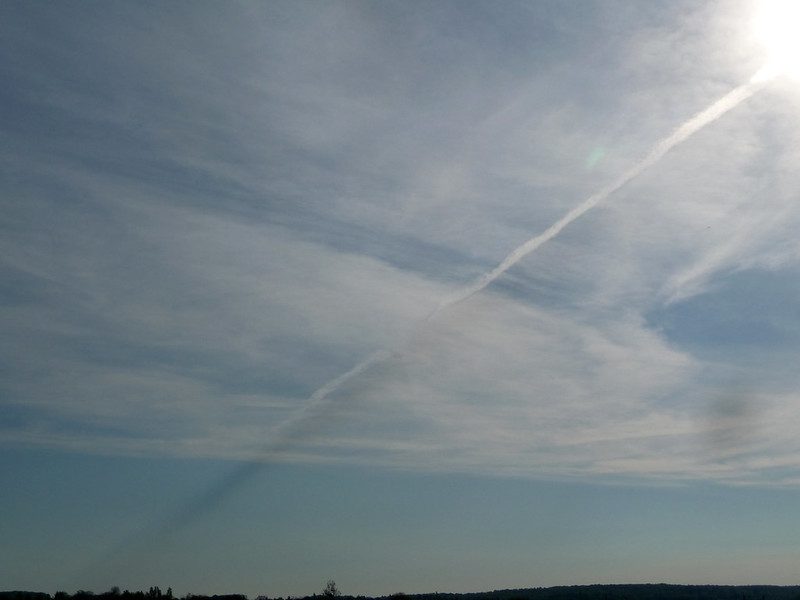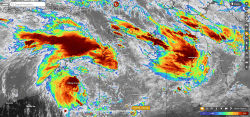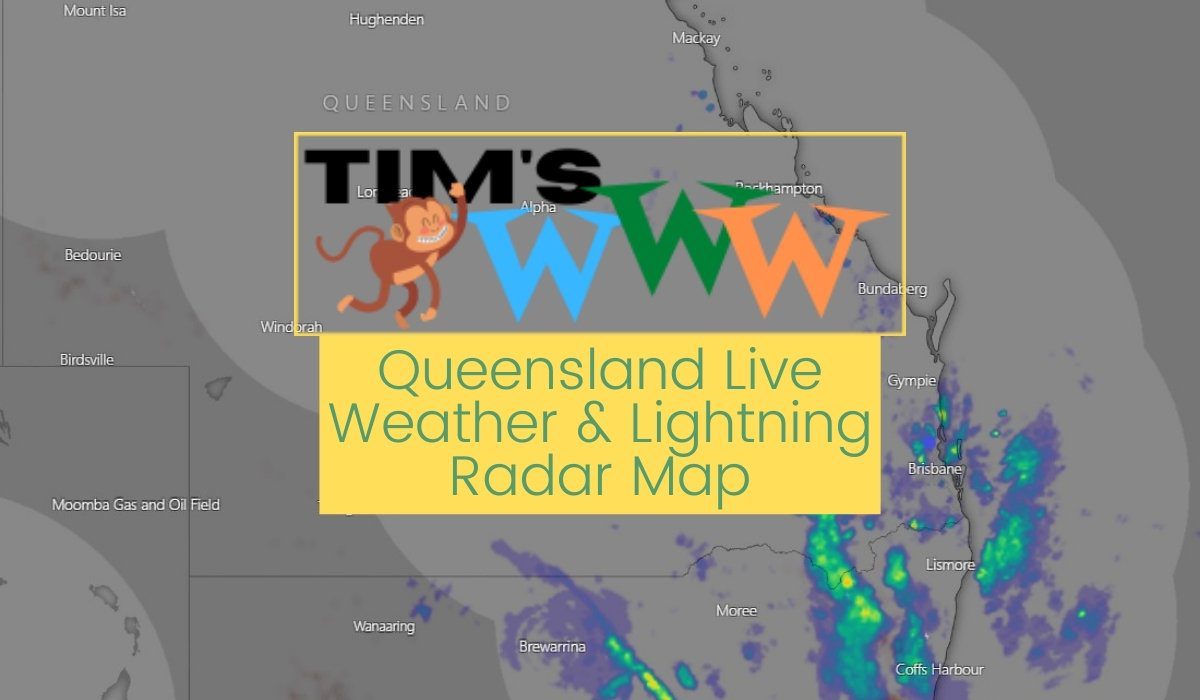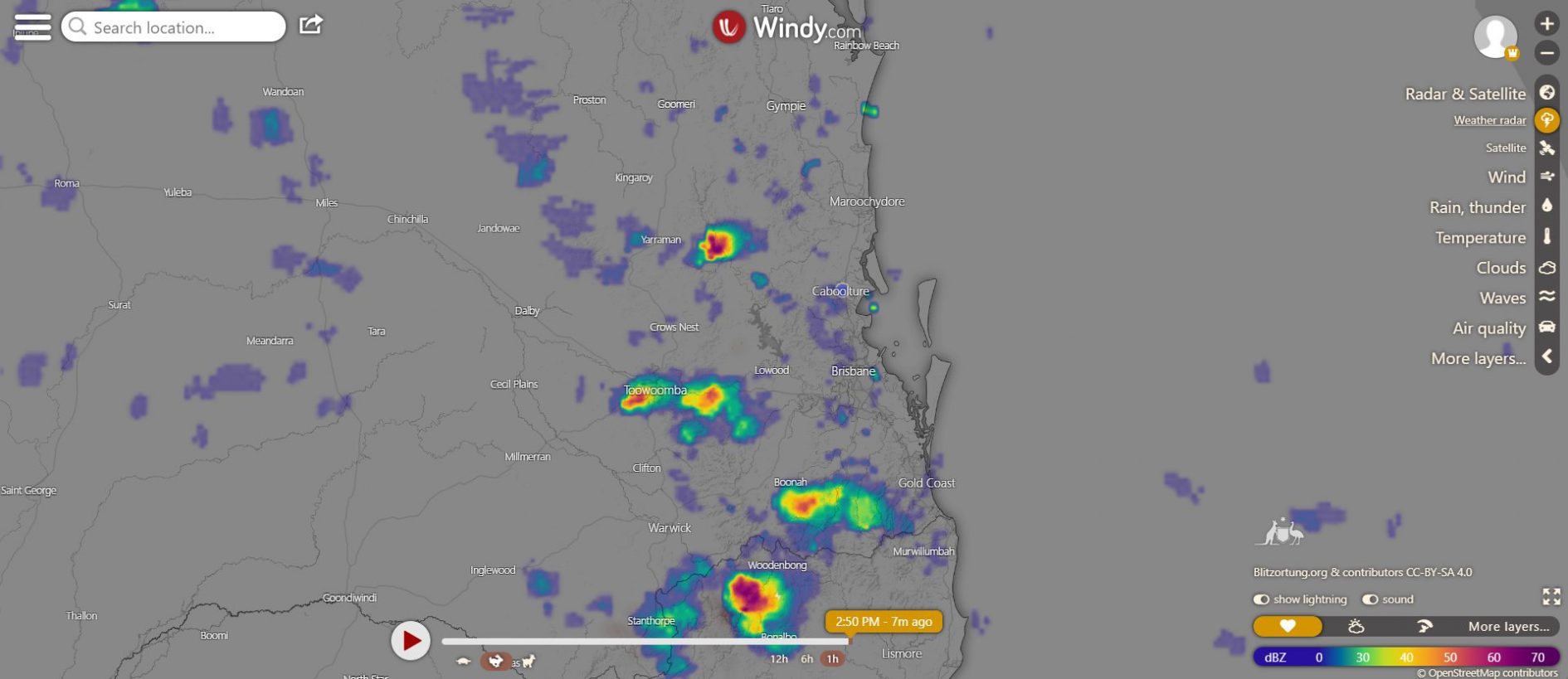
Contrail clouds, those seemingly innocuous white lines streaking across the sky, hold a secret many are unaware of.
Their impact on our environment is far greater than meets the eye. In this blog post, we will delve into the world of contrail clouds and uncover their hidden effects on climate change.
We’ll explore how these condensation trails form and compare their environmental impact to CO2 emissions. As we unravel new atmospheric models predicting increased warming effects from persistent contrails, we’ll discuss potential solutions such as reducing soot emissions and rerouting flights.
Furthermore, you’ll learn about debunking common misconceptions surrounding contrails and their role in global warming. Lastly, we’ll examine cost-benefit analyses for addressing this pressing issue while shedding light on innovative efforts to reduce the climate impact of air travel through targeted flight diversions.
Embark on a journey with us as we delve into the captivating world of contrail clouds – an intriguing subject that is not only intellectually stimulating but also has great importance for safeguarding our planet’s future.
The Environmental Impact of Contrail Clouds: More Than Meets the Eye
Let’s talk contrails, shall we?
You know those white lines you see crisscrossing the blue sky? Those are contrail clouds, and they’re more than just a pretty sight.
In fact, these condensation trails have a significant impact on our environment – even more so than carbon dioxide emissions from airplanes.
Contrails form when hot exhaust gases from aircraft engines mix with cold, humid air at high altitudes. This creates ice crystals that linger in the sky as persistent contrails.
A recent study found that contrail cirrus may be responsible for more warming than all aviation-related carbon dioxide emissions since the dawn of flight. That’s a big problem.
The issue is expected to worsen as air traffic increases, making it crucial to address this often-overlooked aspect of climate change.

New Atmospheric Model Predicting Increased Warming Effects
Researchers at the German Aerospace Center’s Institute for Atmospheric Physics have developed an atmospheric model that separates contrail clouds from natural ones.
This groundbreaking approach allows scientists to better understand how radiative forcing caused by persistent contrails contributes to global warming.
The model predicts that contrail-induced warming will triple by 2050, making it even more urgent to address this issue alongside carbon dioxide emissions.
So what can we do about the contrail problem? Stay tuned for potential solutions and their impact on climate change.
New Atmospheric Model Predicting Increased Warming Effects
We’ve got some groundbreaking news from the German Aerospace Center’s Institute for Atmospheric Physics. They’ve developed a new atmospheric model that separates contrail clouds from natural ones.
Why does this matter?
This innovative approach allows us to better understand how contrails form and their impact on our environment. The results are quite alarming: contrail cloud-induced warming is predicted to increase threefold by 2050.
Separating Contrails from Natural Cloud Formations in Climate Models
In case you’re wondering, separating contrails in climate models isn’t just an academic exercise. This distinction helps researchers accurately measure the radiative forcing of these man-made clouds – which means we can quantify their contribution to global warming more precisely than ever before.
Projected Increase in Global Temperatures Due to Persistent Contrails
- Frightening fact #1: The study suggests that persistent contrails have a bigger warming effect than all CO2 emissions produced by planes since aviation began. Yikes.
- Frightening fact #2: As air traffic increases, so will the formation of these pesky ice crystals high up in our blue sky – making it even harder for us Earthlings down below to try to combat climate change.
What strategies can we implement to address the issue of contrails?
Stay tuned for our next section on reducing soot emissions and its effect on climate change.
Reducing Soot Emissions and Its Effect on Climate Change
Let’s talk about soot emissions, shall we?
Airplanes release these pesky particles into the atmosphere, contributing to the formation of contrail clouds and exacerbating climate change.

But what if I told you that reducing soot emissions could help mitigate this problem?
Contrail clouds, also known as condensation trails, form when hot, humid air from airplane engines mixes with the cold air in the atmosphere. The ice crystals that form in this process create the white streaks we see in the sky. Yet, the persistent contrails can cause the production of cirrus clouds that contain heat and add to global warming.
Reducing soot emissions from airplanes can help reduce the number of persistent contrails and, in turn, reduce the warming effect of contrail cirrus clouds. Soot particles from airplane engines act as a catalyst for the formation of ice crystals in contrail clouds. By reducing soot emissions, we can reduce the number of ice crystals that form and prevent the formation of persistent contrails.
So, what does this mean for the future of our blue sky? By taking action to reduce soot emissions, we can make a positive contribution towards protecting our environment. By reducing soot emissions, we can help mitigate the contrail problem and contribute to the fight against climate change. Let’s collaborate to diminish our ecological effect and craft a more promising tomorrow for ourselves and those who come after us.
Rerouting Flights as a Solution for Persistent Contrails
Let’s talk solutions.
One promising approach to tackle the contrail problem is rerouting flights or making minor altitude adjustments during specific flight paths known for producing persistent contrails. This can prevent much environmental damage without significantly increasing fuel consumption or CO2 release.
Satavia, an innovative company, has been working towards modifying flight plans accordingly. Their first commercial flight following successful trials will take off in October 2023 – exciting times ahead.
Identifying and Targeting Flight Paths with High Contrail Formation
To effectively address the contrail cirrus issue, it’s crucial to identify and target those pesky flight paths that contribute most to persistent contrails formation. By focusing on these routes, we can make a significant impact on reducing their warming effect on our beautiful blue sky without causing too much disruption in air traffic operations.
Satavia’s Efforts to Modify Flight Plans for Environmental Benefits
Satavia deserves some serious applause here. Their team of experts uses advanced data analytics and weather forecasting models to pinpoint high-risk areas where humid air conditions are likely to lead to ice crystals forming around soot particles from airplane engines – hello, contrail clouds.
Armed with this information, they develop alternative routing strategies that minimize the chances of creating long-lasting condensation trails while keeping operational costs low. A win-win situation if you ask me.

In conclusion, we must continue exploring and implementing innovative solutions like Satavia’s to address the contrail problem and reduce their contribution to global warming. We can join forces to have a positive impact on our environment and the generations that follow.
Cost-Benefit Analysis of Addressing Contrail Issues
Let’s talk numbers, shall we?
A study conducted at Imperial College London crunched the data to determine just how much it would cost to tackle contrail problems and what benefits could be reaped from doing so.
The results are quite impressive.
Estimated Costs Associated with Mitigating Contrail Impacts
According to the research, addressing contrail issues would cost under $1 billion per year.
It might sound pricey, but just wait until you hear what could be gained.
Potential Long-Term Benefits and Return on Investment
If implemented effectively alongside the involvement of regulatory bodies, these efforts could provide benefits worth over one thousand times as much as their costs.
In other words: massive returns on investment for our planet’s future health.
- Action Item #1: Advocate for increased funding towards mitigating contrail clouds’ environmental impact. The more resources we allocate now, the better off our planet will be in years to come.
- Action Item #2: Educate yourself and others about persistent contrails by sharing articles like this one or discussing them with friends. Knowledge is power when it comes to tackling climate change challenges such as these.
- Action Item #3: Support companies working on innovative solutions like Satavia, which aims to modify flight plans for environmental benefits. Encourage airlines and aviation authorities to adopt these technologies.

By taking action on contrail problems, we can help protect our planet’s future while enjoying the clear blue skies that are so vital to our well-being.
Contrails form when hot, humid air from airplane exhaust mixes with the cold air in the atmosphere, creating ice crystals that form the visible white streaks we see in the sky. While they may look harmless, persistent contrails can contribute to a warming effect on our planet by trapping heat in the atmosphere. Persistent contrails can cause radiative forcing, a major factor in global warming and climate change.
So, it’s clear that addressing the contrail problem is crucial for our planet’s future. Soot particles from airplane exhaust can also contribute to the problem, making it even more important to take action.
Let’s collaborate to have an effect.
Key Takeaway:
A study conducted at Imperial College London found that addressing contrail issues would cost under $1 billion per year but could provide benefits worth over one thousand times as much as their costs. Advocating for increased funding towards mitigating contrail clouds’ environmental impact and supporting companies working on innovative solutions like Satavia can help protect our planet’s future while enjoying clear blue skies.
Debunking Contrail Conspiracy Theories
Let’s set the record straight: Contrail clouds are not part of a government conspiracy to combat climate change, as some theories suggest. Contrary to some theories, contrails are not part of a government conspiracy; rather, they are the result of natural atmospheric conditions.
Contrails form when hot, humid air from airplane exhaust mixes with the cold air in the atmosphere, creating condensation trails. These trails consist of ice crystals and soot particles and can persist for hours, forming what’s known as “contrail cirrus.”
While persistent contrails may look like a problem, they’re actually a sign of efficient airplane engines. Persistent contrails can cause radiative forcing, a phenomenon that warms the atmosphere and could lead to climate alteration. This effect traps heat in the atmosphere and can contribute to climate change.
To truly tackle this issue head-on, we must focus on reducing both CO2 emissions and persistent contrail formation while keeping our skies blue for future generations.
Diverting Flights for Reduced Climate Impact
We’ve got some groundbreaking news about how a small change in flight paths could make a huge difference in our fight against climate change.
Researchers at Imperial College London have discovered that diverting less than 2% of flights can reduce the total climate impact caused by contrail clouds up to 59%.

FAQs about Contrail Clouds
What are some fun facts about contrail clouds?
Contrail clouds form when hot jet engine exhaust mixes with cold air, causing water vapor to condense and freeze into ice crystals. They can last from a few minutes to several hours, depending on atmospheric conditions. Contrails can also create artificial cirrus clouds that contribute to climate change by trapping heat in the atmosphere.
What is the problem with contrails?
The issue with contrails is their contribution to climate change. Persistent contrails form artificial cirrus clouds that trap heat in Earth’s atmosphere, leading to increased global warming. Studies have shown that aviation-induced cloudiness may have an even greater warming effect than CO2 emissions from aircraft.
Why do military jets not leave contrails?
Military jets sometimes don’t produce visible contrails due to differences in altitude or engine design compared to commercial planes. However, they still emit exhaust gases which could lead to the formation of less-visible or short-lived contrail formations under certain atmospheric conditions.
How do contrails negatively affect the environment?
Contrails negatively impact the environment by contributing significantly towards global warming through persistent cloud formation and trapping of heat within Earth’s atmosphere. This exacerbates climate change effects such as rising sea levels, extreme weather events, and loss of biodiversity.
Conclusion
Contrail clouds, formed by airplane exhaust, have a significant warming impact on the Earth’s atmosphere. However, new atmospheric models and technological advancements offer potential solutions to mitigate their harmful effects.
Rerouting flights and reducing soot emissions are effective measures that can be taken to address contrails. Satavia’s efforts towards modified flight plans demonstrate the role of technology in tackling this issue. Investing in measures to address contrails can have positive impacts on the environment and economy that make it a worthwhile endeavor.































































